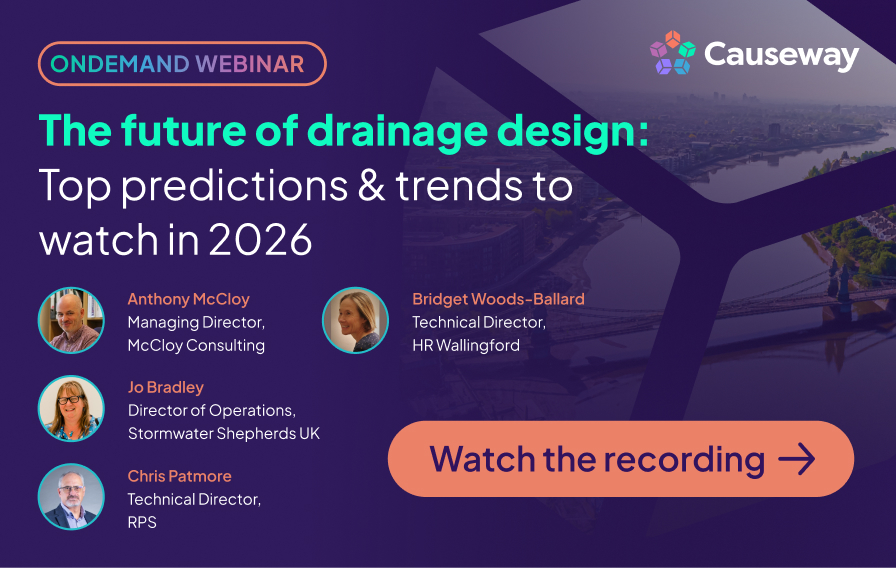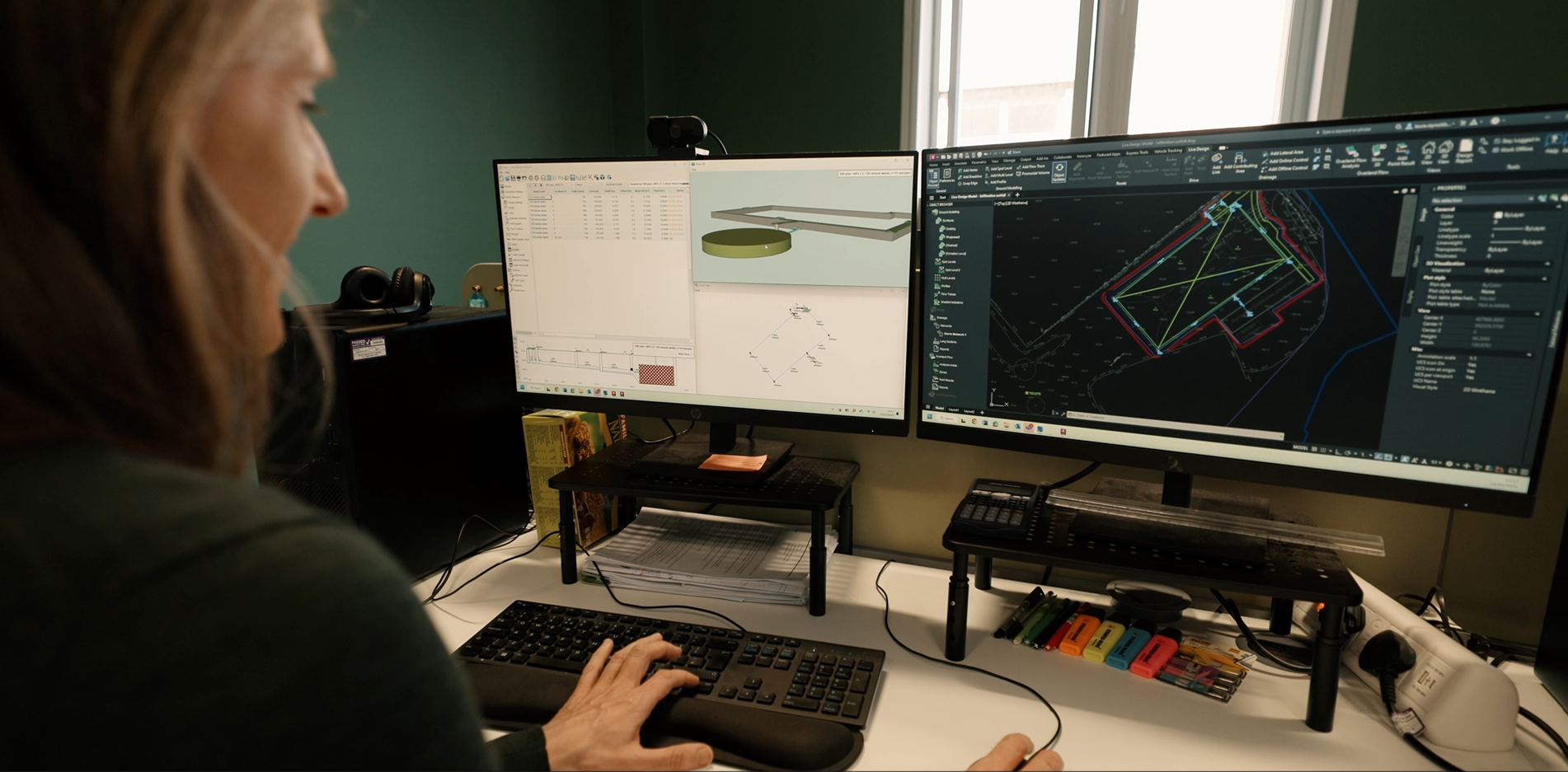In the ever-evolving field of construction and environmental engineering, the implementation of Sustainable Drainage Systems (SuDS) is more than just a trend—it's a necessity. With the increasing frequency of extreme weather events and urban flooding, the importance of effective drainage design has never been more critical. The UK government's introduction of Schedule 3 to the Flood & Water Management Act has further emphasised this need, mandating the integration of SuDS in new developments to mitigate flood risks and manage surface water effectively.
For engineers and construction professionals, understanding the implications of Schedule 3 and the latest advancements in SuDS technology is crucial. This article delves into the impact of Schedule 3, the innovations in SuDS technology, and how these can positively influence the environment and urban planning.
Understanding Schedule 3 of the Flood & Water Management Act
Schedule 3 of the Flood & Water Management Act, introduced in 2010, marks a significant shift in how surface water management is approached in the UK. The act mandates that all new developments must incorporate Sustainable Drainage Systems (SuDS) to manage runoff water effectively. This is a critical step towards reducing the risks of urban flooding and promoting sustainable water management practices.
Key provisions of Schedule 3:
- Mandatory SuDS: All new developments over a certain size must include SuDS in their design.
- Approval from SuDS Approval Bodies (SABs): Developers are required to obtain approval from local SuDS Approval Bodies before construction can commence.
- Long-term maintenance: SuDS must be designed with long-term maintenance in mind, ensuring that they remain functional and effective over time.
These provisions have set a new standard for drainage design in the UK, compelling engineers and developers to integrate innovative SuDS solutions into their projects.
These provisions have set a new standard for drainage design in the UK, compelling engineers and developers to integrate innovative SuDS solutions into their projects.
Watch now: Industry roundtable: implementing Schedule 3 and learning from the Welsh practice
Technological innovations in SuDS design
As the need for effective SuDS becomes more pronounced, technological advancements in this field have accelerated. Engineers now have access to a range of cutting-edge tools and software designed to enhance the planning, implementation, and maintenance of SuDS.
1. Advanced hydraulic modelling software
Hydraulic modelling has always been a cornerstone of effective drainage design. However, recent innovations have made these tools more powerful and accessible than ever. Modern software solutions like Causeway Flow allow engineers to create detailed, adaptable models that accurately predict how SuDS will perform under various conditions. These models can simulate rainfall events, estimate runoff volumes, and optimise the placement of SuDS features to ensure maximum efficiency.
Benefits:
- Accurate predictions of runoff behaviour
- Optimised placement of SuDS components
- Integration with other design tools for a seamless workflow
2. Geospatial analysis and remote sensing
The integration of geospatial analysis and remote sensing technology into SuDS design has revolutionised how engineers approach site assessments and planning.
Dr. Maryam Imani, an Associate Professor of Water Systems Engineering at Anglia Ruskin University, along with her team, is pioneering a proof-of-concept study. Their goal is to design a smart system for monitoring the expanding network of SuDS. By leveraging remote sensing technologies, they aim to automate the monitoring and maintenance of SuDS, making the process more efficient.
By using satellite imagery, LiDAR, and other remote sensing tools, engineers can gain a detailed understanding of a site’s topography, soil composition, and drainage patterns before breaking ground.
Benefits:
- Enhanced accuracy in site assessments
- Identification of optimal locations for SuDS features
- Reduced need for extensive on-site surveys
3. Smart monitoring systems
Smart monitoring systems are increasingly being used to ensure the ongoing effectiveness of SuDS. These systems employ sensors and IoT technology to monitor water levels, flow rates, and other critical parameters in real-time. Data collected from these systems can be used to adjust SuDS operations dynamically, ensuring they continue to perform as intended even under changing conditions.
Benefits:
- Real-time performance monitoring
- Automated adjustments to SuDS operations
- Data-driven maintenance and optimisation
4. AI and Machine Learning in Drainage Design
Artificial Intelligence (AI) and Machine Learning (ML) are being leveraged to improve the design and implementation of SuDS. These technologies can analyse vast amounts of data from past projects, climate models, and environmental conditions to predict the most effective SuDS designs. By automating parts of the design process, AI and ML can help engineers create more efficient and resilient drainage systems.
Benefits:
- Enhanced design accuracy
- Predictive analytics for future performance
- Streamlined design processes
The environmental impact of SuDS innovations
The adoption of advanced SuDS technologies is not only beneficial for managing surface water but also has a profound positive impact on the environment. By mimicking natural drainage processes, SuDS reduces the volume and speed of runoff, which in turn decreases the risk of flooding and water pollution. Furthermore, many SuDS features, such as green roofs and swales, contribute to urban biodiversity, creating habitats for wildlife and improving the overall quality of urban spaces.
Overcoming challenges in SuDS implementation
While the benefits of SuDS are clear, implementing them can be challenging, especially in urban areas with existing infrastructure. However, with the right tools and a collaborative approach, these challenges can be effectively managed.
1. Integration with existing infrastructure
One of the main challenges in SuDS implementation is integrating new systems with existing urban infrastructure. Buried infrastructures like sewer pipes, cables and tunnels will need to be located and considered when thinking about SuDS. Engineers must carefully plan how SuDS will interact with existing drainage networks, roads, and buildings to ensure that the systems function effectively without disrupting other services. Limited access to these utilities will likely restrict the types of SuDS available to use and require engineers to design workarounds.
Solution: Existing drainage infrastructure could potentially be reused as part of a cost-effective drainage strategy. Thus, it is important to understand the location and capacity of existing drainage networks to determine their potential.
Design software like Causeway Flow helps engineers make informed decisions; some of the primary benefits include the ability to assess existing site conditions such as brownfield/greenfield runoff and accurately model the hydraulic performance of these systems. This is essential for ensuring that retrofitted SuDS can handle expected rainfall events and contribute to flood risk mitigation.
2. Regulatory compliance
Ensuring that SuDS designs comply with Schedule 3 and other local regulations can be complex, particularly as these regulations continue to evolve.
Solution: Keeping up to date with regulatory changes and using software that is regularly updated to reflect these changes is essential. Collaborating with local authorities from the early stages of design can also help ensure compliance
3. Long-term maintenance
SuDS requires ongoing maintenance to remain effective. This includes cleaning filters, managing vegetation, and repairing any damage caused by weather or wear over time.
Solution: Incorporating smart monitoring systems into SuDS designs can help identify maintenance needs early, preventing minor issues from becoming major problems. Additionally, designing SuDS with easy maintenance in mind can reduce the long-term costs associated with these systems.
Leveraging Causeway's drainage design solutions for effective SuDS designs
At Causeway, we understand the complexities involved in SuDS design and implementation. Our end-to-end drainage design software provides a comprehensive solution that empowers engineers to design, plan, and maintain effective SuDS systems in compliance with Schedule 3.
Key features:
- Sustainability in mind: Intuitively model SuDS components that adhere to the core principles outlined in the SuDS Manual. Balance the four pillars of SuDS, ensuring compliant, harmonious, and effective designs.
- Advanced modelling tools: Our software includes state-of-the-art modelling tools that enable precise design and analysis of SuDS systems.
- Regulatory compliance: Built-in features ensure that your designs meet the latest regulatory standards, reducing the risk of non-compliance.
By leveraging our software, you can overcome the challenges associated with SuDS design and create drainage systems that are not only compliant but also sustainable and efficient.
Conclusion
The future of drainage design is firmly rooted in the integration of effective and well-designed Sustainable Drainage Systems (SuDS) and the ongoing advancements in technology. As Schedule 3 of the Flood & Water Management Act continues to shape the regulatory landscape, engineers must stay ahead of the curve by adopting innovative tools and practices. By doing so, they can create drainage systems that not only meet regulatory requirements but also contribute to a more sustainable and resilient built environment.
For more information on how Causeway's Construction Management Software can support your SuDS design and implementation, visit our website or contact our team of experts today. Let's build a sustainable future together.



